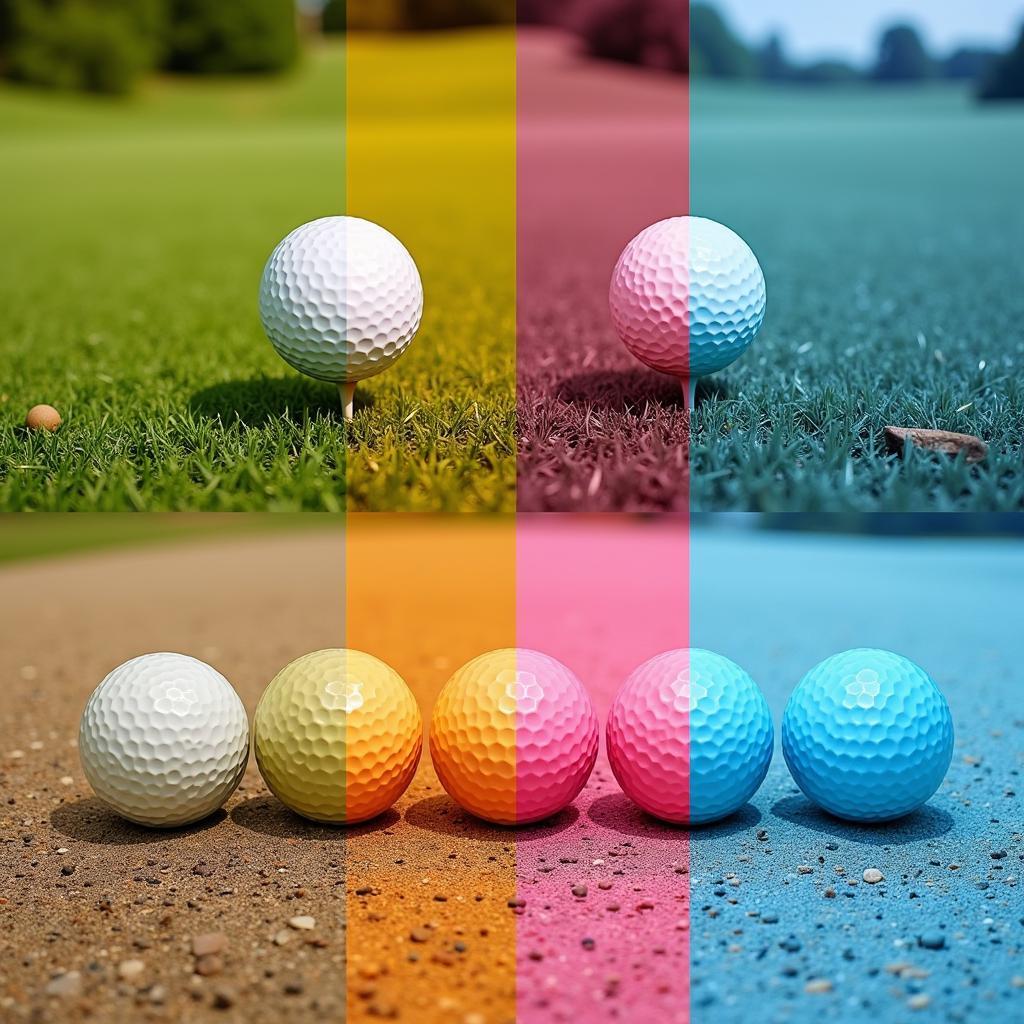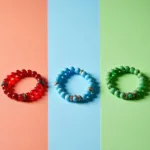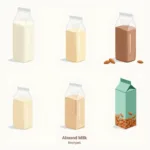Choosing the right golf ball color can significantly impact your game. Many golfers wonder, What Color Golf Ball Is The Easiest To See? The answer isn’t always straightforward, as visibility depends on several factors, including course conditions, lighting, and individual eyesight. However, understanding the science of color and visibility can help you make an informed decision and potentially lower your scores.
Understanding Golf Ball Visibility
Several factors influence how easily you can spot your golf ball. The contrast between the ball and its background is paramount. A bright ball against a dark background, or vice versa, will be easier to see. This is why white has traditionally been the most popular golf ball color. It contrasts well with the green grass and blue sky. However, with advancements in technology and the introduction of high-visibility colors, the options have expanded considerably.
The Science Behind Seeing Colors
The human eye is most sensitive to the yellow-green part of the visible light spectrum. This is why high-visibility colors like optic yellow, orange, and lime green are becoming increasingly popular. These colors stand out against the green of the fairway and the brown of the rough.
Course Conditions and Lighting
Overcast skies or shaded areas can make it more challenging to see a white ball. In these conditions, a brighter, more vibrant color can be advantageous. Similarly, the color of the foliage surrounding the fairway can also affect visibility. If the surrounding trees and bushes have yellow or orange leaves during the fall, a contrasting color like pink or blue might be easier to track.
Popular Golf Ball Colors and Their Visibility
Let’s delve deeper into the various golf ball colors available and their visibility characteristics:
-
White: The classic and most common choice. Offers good visibility in bright, sunny conditions.
-
Optic Yellow: Highly visible in most conditions, particularly on overcast days or in shaded areas.
-
Orange: Another high-visibility option that performs well in various lighting conditions.
-
Lime Green: Stands out against the green fairway while still offering good visibility against the blue sky.
-
Pink: A less common but increasingly popular choice. Provides excellent contrast against green and brown backgrounds.
-
Blue: A good choice for courses with a lot of autumn foliage or in areas with sandy soil.
 Comparing Golf Ball Colors on Various Backgrounds
Comparing Golf Ball Colors on Various Backgrounds
Considering Your Eyesight
Individual eyesight also plays a role in choosing the right color. Some people are more sensitive to certain colors than others. If you have difficulty seeing certain colors, choosing a contrasting color can be beneficial. Consulting an eye specialist can help determine if specific colors are more suitable for your vision.
Finding the Right Golf Ball Color for You
There’s no single “best” golf ball color. The ideal choice depends on your playing conditions, personal preferences, and eyesight. Experimenting with different colors can help you determine what works best for you.
“Many golfers underestimate the impact of ball color on their game. Choosing the right color can significantly improve visibility and lower scores,” says Dr. Robert Green, a leading sports vision specialist.
Conclusion
Choosing the right golf ball color can enhance your on-course experience. While white remains a popular choice, high-visibility options offer advantages in certain conditions. Considering factors like course conditions, lighting, and personal eyesight is essential when selecting a golf ball color. By understanding these factors, you can find the color that optimizes visibility and helps you play your best game. What color golf ball is the easiest to see? Experiment to find your perfect match!
FAQ
- Are colored golf balls more expensive than white golf balls? Not necessarily. Pricing depends more on brand and construction than color.
- Do different colored golf balls perform differently? No, the color of the golf ball does not affect its performance characteristics.
- Can I use different colored golf balls during the same round? Yes, as long as they are all conforming to the Rules of Golf.
- What is the least visible golf ball color? Generally, darker colors like dark blue or black would be the least visible on a golf course.
- Does the color of the golf ball affect putting? The color itself doesn’t impact putting physics, but individual perception and preference may play a role.
- Why are most golf balls white? Traditionally, white offered the best contrast against green grass and blue skies and was easier to manufacture consistently.
- Are there any regulations on golf ball colors? While there are regulations on size and weight, there are no restrictions on the color of a golf ball.
“Don’t just grab the first golf ball you see. Consider the color carefully – it could be the difference between finding your ball and losing it in the rough,” advises seasoned golf pro, Sarah Miller.
Need help choosing the right golf ball?
Contact us! Phone: 0373298888, Email: [email protected] or visit us at 86 Cau Giay, Hanoi. We have a 24/7 customer support team ready to assist you.

